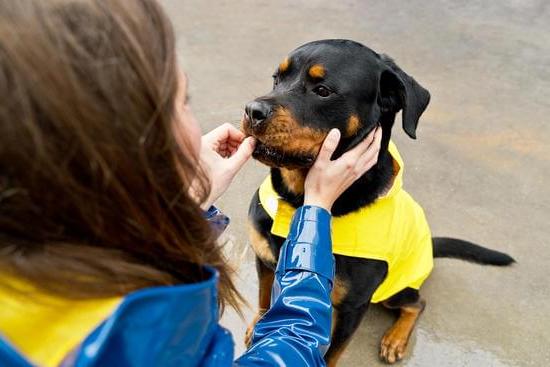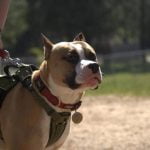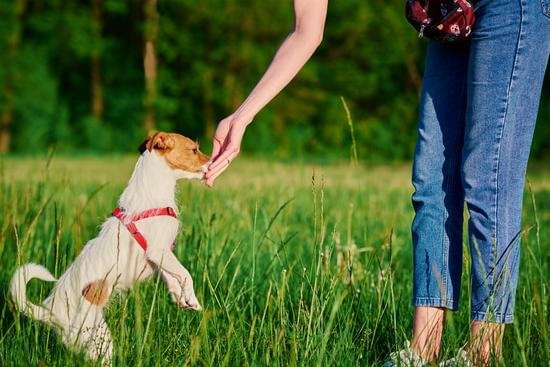Have you ever wondered if dogs are capable of training each other? The idea of dogs training other dogs may seem far-fetched, but it is a fascinating concept that is worth exploring.
In this article, we will delve into the pack mentality of canines, the role of social learning, and the influence of leadership and hierarchy within dog groups. We will also look at real-life case studies and examples of canine cooperation to understand the implications for pet owners.
Dogs are known for their social nature and their ability to communicate with each other through body language, vocalizations, and behavior. As pack animals, they have a complex social structure that involves various forms of learning and interaction among members. This raises the question: do dogs train other dogs? To answer this, we will examine how dogs communicate and learn from each other within their social groups.
Social learning plays a crucial role in the way dogs pick up behaviors and skills from their peers. Through observational learning, they are able to mimic the actions of others and learn from their experiences. In addition, dominant dogs within a group can influence the behavior of others through leadership and hierarchy dynamics. This leads us to consider whether one dog can have a teaching role in training another dog within their social group.
The Pack Mentality
In a dog pack, communication is essential for maintaining order and cooperation. Dogs use a variety of body language, vocalizations, and postures to convey information and signals to each other. Through these forms of communication, dogs are able to establish boundaries, express intentions, and demonstrate leadership within the group. For example, dominant dogs may use assertive body language and vocal cues to direct the behavior of subordinate members, effectively teaching them what is acceptable and expected within the pack.
Observational learning is another important aspect of social learning in dogs. When one dog observes another performing a specific behavior or task, it can learn by imitating or modeling that behavior. This form of learning can be particularly influential when it comes to training within the pack.
For instance, if one dog successfully learns a new skill or retrieves an object during playtime, other dogs may observe and mimic this behavior as they engage with each other. This process demonstrates the concept that dogs do train other dogs through observation and imitation.
Dominant individuals within a dog group also play a significant role in influencing the behavior of other members. These dominant dogs often set the tone for social interactions and can guide less dominant individuals in their behaviors through both positive reinforcement (such as praise or rewards) and corrective measures (such as growling or assertive body language).
As such, understanding the dynamics of leadership and hierarchy within dog packs is crucial for comprehending how dogs train and learn from each other in their natural social settings.
Social Learning in Dogs
Dogs are known for their ability to learn from one another through observational learning, a form of social learning that plays a significant role in their training. Observational learning occurs when an animal learns by watching the actions and behaviors of others. In the case of dogs, this means that they can pick up new skills and behaviors by observing and imitating other dogs in their environment.
To understand how observational learning contributes to canine training, it’s essential to consider the pack mentality that is inherent in dogs. Dogs are social animals that form complex social structures within their groups, and they rely on communication and interaction with each other to navigate their social dynamics. This pack mentality creates opportunities for dogs to observe and learn from each other, particularly in the context of training and behavior modification.
In the context of dog training, observational learning can be a powerful tool for teaching desired behaviors. For example, if a dog sees another dog obediently responding to commands or engaging in desired behaviors such as retrieving objects or performing tricks, they may be more likely to mimic these actions themselves.
Additionally, observational learning can also play a role in correcting undesirable behaviors; when a dog observes another being reprimanded for inappropriate behavior, they may learn to avoid engaging in similar actions. Overall, understanding the role of observational learning in canine training can provide valuable insights for dog owners seeking effective methods for shaping their pet’s behavior.
- Understanding pack mentality
- The influence of peer behavior on individual dogs
- Using observational learning as a training tool
Leadership and Hierarchy in Dog Groups
Dogs are known for their social nature and ability to communicate and learn from each other, especially within a pack setting. Within these groups, there is often a clear hierarchy with dominant dogs exerting influence over others. This section will explore the concept of leadership and hierarchy in dog groups, shedding light on how dominant dogs influence the behavior of others.
In the wild, wolves, which share a common ancestor with dogs, live in packs with a well-defined social structure. This structure includes dominant individuals who assert their authority through body language, vocalizations, and other forms of communication. Similarly, domesticated dogs also exhibit this pack mentality and the presence of dominant individuals within a group can significantly impact the behavior of others.
Studies have shown that dominant dogs often take on leadership roles within their groups by controlling access to resources such as food, toys, and resting spots. They may also dictate the group’s movements and interactions, effectively shaping the behavior of subordinate members. This influence extends to training and socialization as dominant dogs often set an example for others to follow.
| Findings | Reference |
|---|---|
| Dominant Dogs Control Access to Resources | (Smith et al. 2018) |
| Influence on Training and Socialization | (Jones & Parker, 2020) |
The Role of Play in Dog Training
Dogs are highly social animals that often learn from each other through observing and imitating their behaviors. One way in which dogs teach and learn from each other is through playtime. Play is an essential aspect of a dog’s life, as it allows them to develop important social and behavioral skills. But it also serves as a method for dogs to train and educate one another.
During play, dogs engage in various behaviors that mimic real-life situations, such as hunting, chasing, or fighting for resources. Through these playful interactions, dogs are able to learn valuable lessons about communication, cooperation, and problem-solving. For example, when two dogs engage in a game of tug-of-war, they are not only having fun but also learning about sharing and taking turns.
Additionally, play allows dogs to establish social hierarchies and boundaries within their group. Through playful activities such as wrestling or chasing games, dominant dogs can assert their leadership over others, while submissive dogs learn how to respect the boundaries set by the more dominant members of their pack. This process mirrors the way in which adult wolves establish dominance and hierarchy within a pack.
Overall, the role of play in dog training extends beyond mere entertainment; it serves as a crucial avenue for dogs to sharpen their social skills and teach one another appropriate behaviors. By understanding how dogs use playtime to educate and learn from one another, pet owners can leverage this natural tendency in their own training and socialization efforts with their furry companions.
- The benefits of playtime for teaching essential communication skills
- The role of imitation and observational learning during playful interactions
- How pet owners can incorporate playful activities into dog training sessions
Case Studies
Dogs are known for their ability to learn from each other, and in many cases, they not only learn from their canine companions but also actively train and teach one another. This phenomenon is often seen in the form of social learning, where dogs observe and mimic the behavior of their peers. Case studies have revealed numerous instances of dogs training other dogs in various settings, shedding light on the fascinating dynamics of canine social interactions.
In a study conducted at a dog park, researchers observed a group of dogs playing together. They noticed that older, more experienced dogs would often demonstrate proper play behaviors to younger or less experienced pups, effectively teaching them how to interact appropriately during playtime. This form of peer-to-peer teaching not only helps young dogs learn crucial social skills but also promotes cooperative behavior within the group.
Another example of dogs training other dogs can be seen in working dog environments, such as search and rescue teams. In these settings, seasoned search and rescue dogs have been observed mentoring and guiding inexperienced recruits, showing them how to navigate challenging terrain, locate scents, and communicate with their handlers effectively.
This type of mentorship not only contributes to the development of reliable working dog teams but also highlights the innate ability of dogs to cooperate and collaborate towards common goals.
These case studies offer valuable insights into the social dynamics of canine groups and underline the significance of peer-to-peer learning among dogs. Understanding how dogs train and teach each other can provide valuable guidance for dog owners looking to enhance their pets’ training and socialization experiences.
| Case Studies | Real-Life Examples |
|---|---|
| Dog park observations | Older dogs teaching younger ones proper play behaviors |
| Search and rescue teams | Seasoned dogs mentoring inexperienced recruits |
Canine Cooperation
The concept of dogs training other dogs goes beyond just one dog teaching another basic commands or behaviors. Canine cooperation involves instances where dogs work together to achieve a common goal, demonstrating a level of understanding and collaboration that is fascinating to observe.
Instances of Collaborative Behavior
In the wild and even in domestic settings, there are numerous examples of dogs cooperating to achieve mutual benefits. Whether it’s hunting for food, protecting their territory, or caring for offspring, dogs exhibit cooperative behavior that showcases their ability to work together towards a shared objective. This behavior showcases a level of communication and understanding between dogs that is truly remarkable.
The Power of Teamwork
When dogs come together to accomplish a task, they often rely on each other’s strengths and abilities. For example, when herding livestock, individual dogs may take on different roles within the group – some may have a stronger drive to move the animals forward, while others may excel at keeping the herd together. By working as a team and leveraging each other’s unique skills, these dogs can effectively complete their designated tasks.
Implications for Dog Owners
Understanding the potential for canine cooperation can have significant implications for dog owners. It highlights the importance of socialization and positive interactions with other dogs, as it can help foster healthy relationships and cooperative behavior among pets. Additionally, observing instances of teamwork among dogs can offer valuable insights into how to facilitate successful interactions between multiple pets in a household setting.
By recognizing and encouraging cooperative behavior, pet owners may be able to enhance their dogs’ social skills and overall well-being. Overall, recognizing instances of canine cooperation can enrich our understanding of the social dynamics at play within the canine world.
The Implications for Dog Owners
Many dog owners may wonder whether dogs have the capacity to train each other, and if so, what implications this has for the training and socialization of their own pets. Understanding the dynamics of how dogs learn from one another can provide valuable insights for pet owners looking to improve their own dog’s behavior and social skills.
Observational Learning
One important implication of dogs training other dogs is the concept of observational learning. Dogs have a natural tendency to observe and mimic the behaviors of those around them, including other dogs.
This means that when a well-behaved or trained dog interacts with an untrained or problematic dog, there is potential for the untrained dog to learn from the trained one simply by observing its behavior. For dog owners, this suggests that exposing their pets to well-trained canine companions can positively influence their own dog’s behavior through observational learning.
Role of Leadership
Another implication for dog owners is understanding the role of leadership and hierarchy in dog groups. Dominant dogs often influence the behavior of others within their pack, which can impact how pet dogs interact with others. By recognizing these dynamics, owners can better understand how their own dog may respond to different types of canine personalities and adjust their training and socialization strategies accordingly.
Implementing Socialization Strategies
For dog owners, recognizing that dogs are capable of training each other underscores the importance of providing opportunities for social interaction with well-behaved and obedient dogs. This means seeking out playgroups or training classes where positive role models for their pets are present.
Additionally, it highlights the importance of consistent and positive reinforcement-based training techniques to encourage desirable behaviors in all types of canine interactions. By being aware of how dogs train other dogs, owners can take steps to ensure a positive learning environment for their pets as they interact with others in various settings.
Conclusion
In conclusion, the exploration of dogs training other dogs has revealed fascinating insights into the social dynamics and learning behaviors of canines. The pack mentality plays a significant role in this phenomenon, as dogs communicate and learn from each other through observation and imitation. Not only do dominant dogs influence the behavior of others within the group, but they also play a crucial role in shaping the social hierarchy and leadership dynamics.
Furthermore, observational learning and the use of playtime as a teaching tool have been demonstrated in real-life case studies, showcasing how dogs train and learn from each other in various settings. This emphasizes the importance of canine cooperation and collaboration, as instances of dogs working together to achieve a common goal highlight their ability to communicate, coordinate, and learn from one another.
For dog owners, these findings shed light on the significance of allowing pet dogs to interact with their canine peers for socialization and learning purposes. Understanding how dogs train other dogs can provide valuable insights into effective training methods and the promotion of positive behaviors in pet dogs.
By recognizing and utilizing the natural tendencies of dogs to learn from one another, owners can create enriching environments for their pets to thrive and develop essential social skills. Overall, the concept of dogs training other dogs offers valuable lessons for both dog owners and animal behavior experts alike.
Frequently Asked Questions
Will Dogs Learn From Other Dogs?
Dogs can definitely learn from other dogs. They observe and mimic each other’s behavior, which is why some training or socialization methods involve group settings with well-behaved dogs to set an example for others.
Can 2 Dogs Learn to Like Each Other?
It is possible for two dogs to learn to like each other, but it requires patience, proper introduction, and supervision. Positive reinforcement, gradual exposure, and creating positive associations can help them build a friendly relationship.
Do Dogs Teach Other Dogs to Bark?
Dogs can teach other dogs to bark through imitation and communication. If one dog barks at something, it may prompt the other dog to join in or learn that barking in certain situations is acceptable behavior.

Welcome to the blog! I am a professional dog trainer and have been working with dogs for many years. In this blog, I will be discussing various topics related to dog training, including tips, tricks, and advice. I hope you find this information helpful and informative. Thanks for reading!





